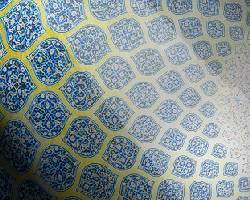Prophetic Traditions of 'Eed
14/11/2018| IslamWeb
The Muslim is obliged to pray certain prayers in congregation: the five daily prayers, the Friday prayer (Salat al-Jumu’ah), the prayers of the two ‘Eeds and during the Hajj. The purpose behind these congregational prayers it is to provide opportunities to a greater number of Muslims to attend larger congregations in an atmosphere of religious piety. Apart from prayer, the sermon is an integral part of this gathering and the prayer.
The ‘Eed prayer is valid for men, women, children, travelers, residents, people in congregation, and people praying individually. It is also valid if performed in a house, mosque, or a distant place designated for the Salah (prayer).
There are several acts of the Sunnah (traditions of the Prophet, ) associated with the two 'Eeds.
Here we discuss some of them and outline their benefits:
• The Muslim must take a bath before the ‘Eed Prayer and wear the best of his clothes. This was the practice of the righteous predecessors. Imaam Al-Baghawee said in ‘Sharh us Sunnah’ that, “The Sunnah is to take a bath on the day of ‘Eed. It is reported that ‘Ali used to take bath on the day of ‘Eed, and similarly it is reported that Ibn ‘Umar and Salamah ibn Al-Akwa’ used to do so.
• He should use the tooth-stick (Miswaak) before going to the ‘Eed prayer.
• He must remove all offensive smells, which might distract or trouble others. It is prohibited for him to attend the ‘Eed prayer, if he smells onion or garlic. It is highly recommended for him to apply perfume in order to smell pleasant for the benefit of those who are in close proximity to him during prayer.
• It is an act of Sunnah that the Muslim eats some dates in the morning before he goes to the place of the ‘Eed Prayer. This was the practice of the Prophet, .
• The Muslim should also hasten to have his breakfast in the morning of ‘Eed in compliance with the order of Allah The Almighty.
• It is an act of Sunnah that women and children go out to attend the ‘Eed Prayer. However, the menstruating women should avoid the place of prayer, although they can listen to the Khutbah and supplications.
• The Muslim goes to the place of the ‘Eed Prayer on foot and takes one road for going and another road for returning, as the Prophet, , was authentically reported to have done this.
• It is preferable for the Muslim to wait in the prayer place to listen to the Khutbah and say Aameen to the supplications. The Prophet ![]() said regarding the menstruating women that they should be present: "To witness goodness and the Muslims gatherings and supplications."
said regarding the menstruating women that they should be present: "To witness goodness and the Muslims gatherings and supplications."
• There is no voluntary prayer before or after the ‘Eed Prayer. However, if the Muslim enters the prayer place or the Masjid, he is required to perform Tahiyyat-ul-Masjid (two Rak’ahs for greeting the mosque) even if it is at a time in which prayer is prohibited. That is because Tahiyyat-ul-Masjid is one of the prayers that can be performed at the prohibited times.
• It is recommended for the Muslim to busy himself with Takbeer till the Imaam comes for prayer, because Takbeer is the recommended act of worship at that time. The Muslim may recite the Quran or perform voluntary prayers on the condition that it is not a prohibited time. However, saying Takbeer is preferable.
• If people do not recognize the day of ‘Eed except after the sun has reached overhead (in the middle of the sky), they should perform the ‘Eed Prayer on the next day. If the Muslim joins the Imaam in Tashah’hud (the final, seated part of the prayer), he should sit with him and complete two Rak‘ahs after him, each starting with Takbeer.
• If the Muslim misses the ‘Eed Prayer, he should not make up for it. This is the preponderant opinion because there is no evidence on making up for it if the Muslim misses it.

